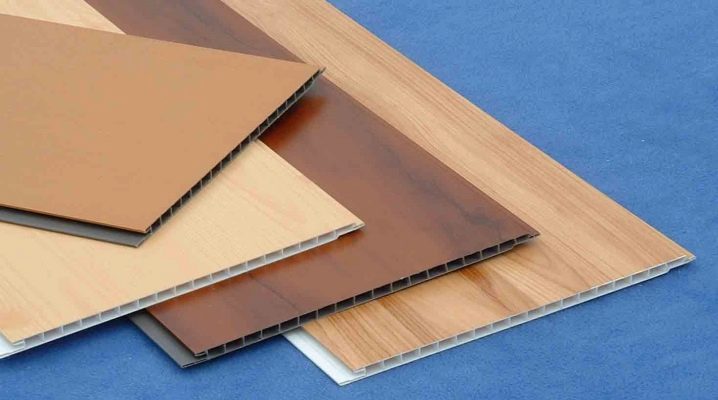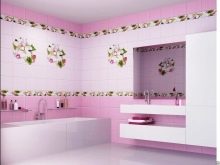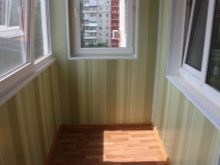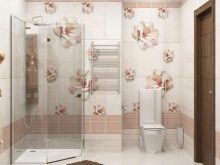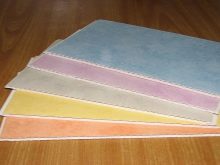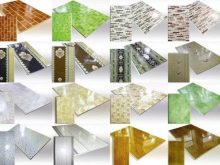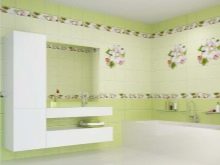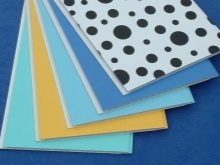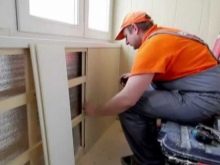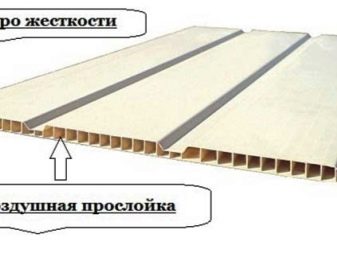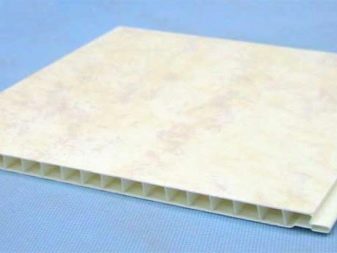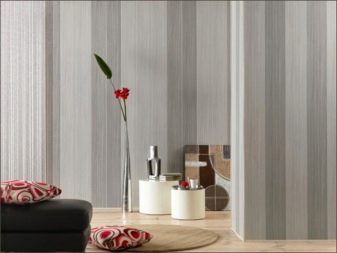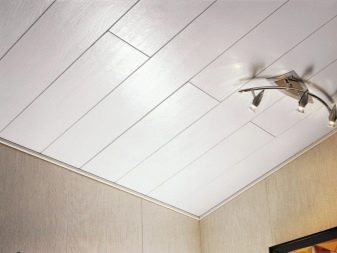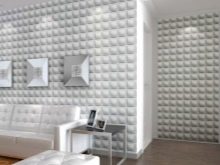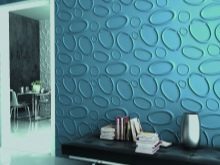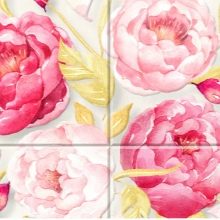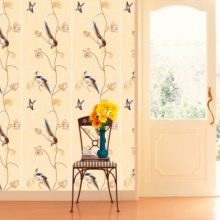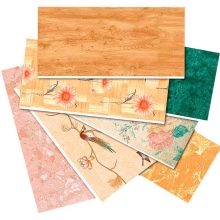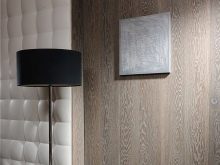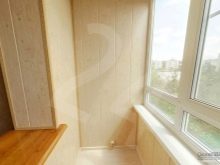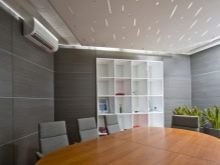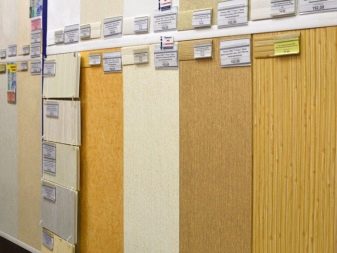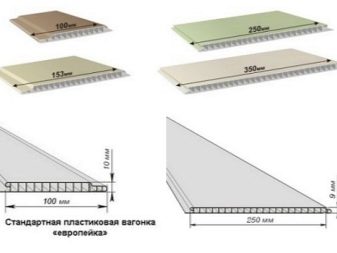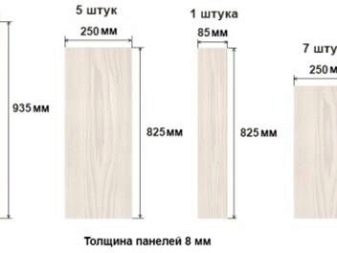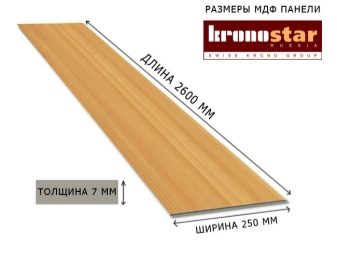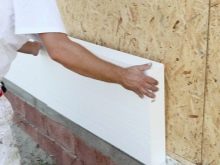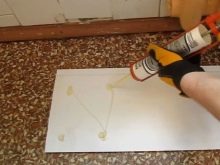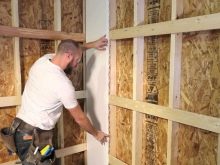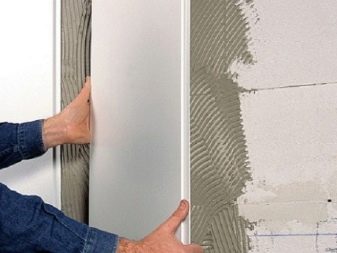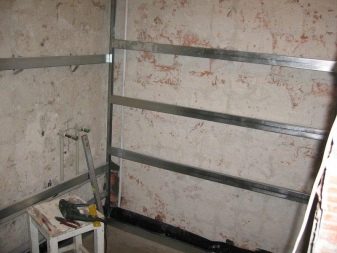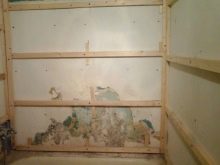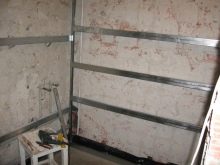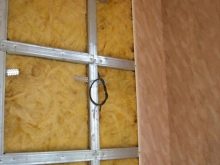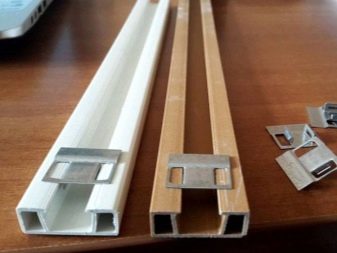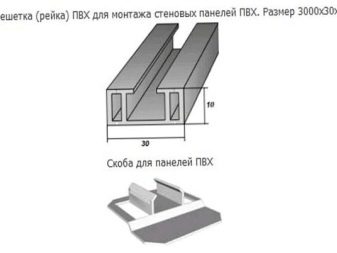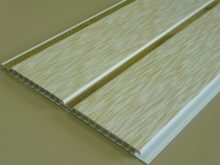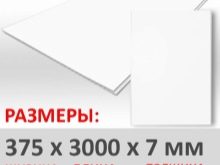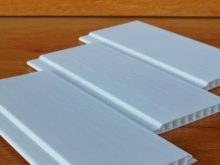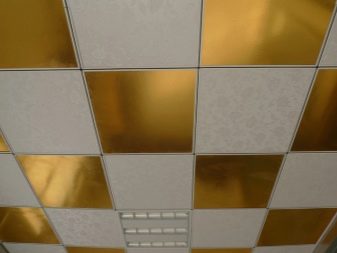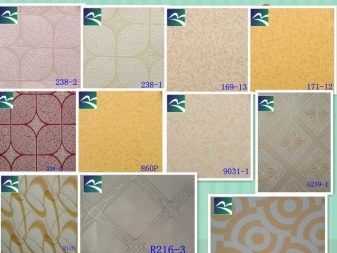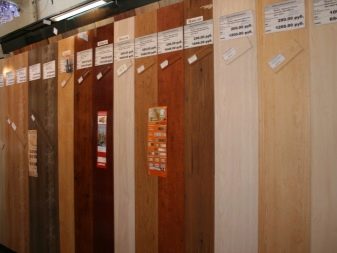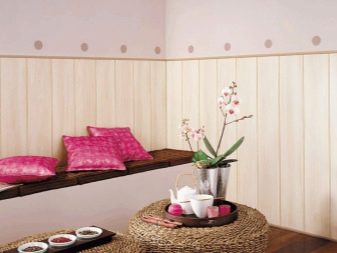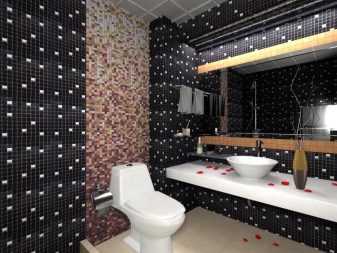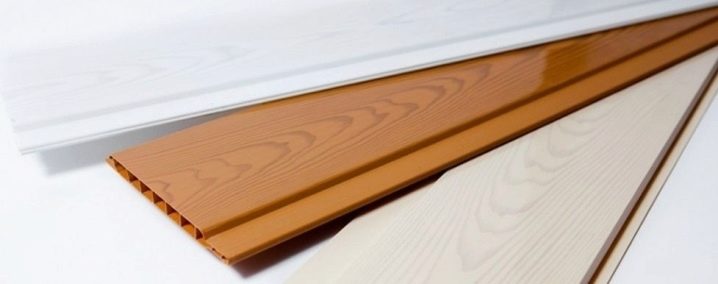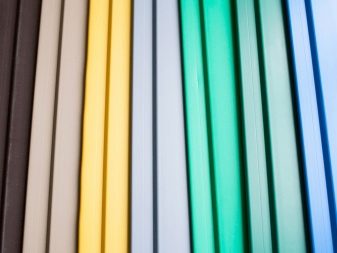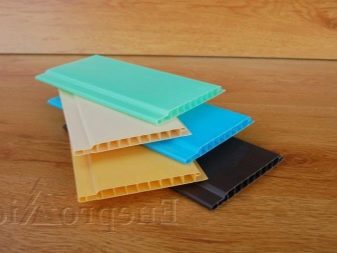What are the sizes of PVC panels?
Progress does not stand still, technologies in the field of building materials are improved. As a result, recently, 10 to 12 years ago, polyvinyl chloride panels appeared in Russia for finishing, decorating walls, ceilings in living rooms and bathrooms, on the balcony, and loggias. PVC-panels won the attention of customers with simplicity, ease of installation and its advantages.
Properties: advantages and disadvantages
Polyvinyl chloride panels are characterized by a considerable number of advantages.
- Beautiful appearance persists for a long time. If you do the cleaning regularly, using cleaning or soap solutions, the quality and novelty will please for a long time.
- Acceptable price. Allowed to revive the apartment with a moderate budget.
- Variety of types, configurations, categories.
- The versatility of the color palette helps to show all sorts of ideas of designers.
- Tolerate increased loads, temperature drops. In addition, durable and safe. The burning temperature is very high - above 399? C.
- Resistance to moisture, numerous types of fungus, mold.
- Easy to wash and clean using simple detergents.
- Repair is done quickly and easily using PVC panels. The end result is practical and tidy. To install special knowledge is not required.
- It is not difficult to replace if damage appears.
- The design is light and easy to install.
- Differs in good zvuko-and thermal insulation.
- Environmentally friendly material. Polyvinyl chloride is a thermoplastic plastic produced from natural gas or oil and salt by electrolysis. This inert, durable chemical is absolutely harmless: it is used for the manufacture of children's toys, packaging for dairy products, containers for storing water and food.
But PVC panels have drawbacks:
- fragility (the panels are hollow inside, the configuration is supported by stiffeners);
- release of toxic gases in case of fire.
PVC plates differ in purpose and method of connection.
The structure of the panels consists of two plastic sheets rigidly joined to each other by small longitudinal bridges. The corresponding pattern is applied on the front side, and the side edges are made with projections and grooves.
Species
By appointment, there are two categories: wall and ceiling.
The first ones are characterized by a long service life, durability and moisture resistance (they do not even let water pass through the joints). Their weight is significantly different from the ceiling.
They differ in terms of strength and are divided, in turn, into several subspecies.
Panels with 3D effect or offset printing
Perfect 3D-drawing, branded full-color printing, insulating layers of lacquer, make them look like natural stone, wood, ceramic tile or high-quality realized graphics. Ultraviolet paints applied to the panels instantly dry, the next layer of varnish does not allow to enter into chemical interaction with air.
Drawing pictures, paintings, ornaments, compositions of panels will help to make the interior unique, original, unique.
Panels 3D - a wonderful solution to the problem when creating a new, comfortable interior in an apartment, office, store.
Panels with thermal printing or thermotranslation
The technique of applying the decor on the PVC plates is called thermal printing and transfers all sorts of drawings, colors to choose from. A drawing is drawn onto the polymer film, then on specialized equipment at high temperature it is removed to the surface of the panel. The received front side of the panel is not treated with varnish: the film coated with paint is resistant to wear, moisture and ultraviolet rays.
Ease of installation, moisture resistance, resistance to temperature extremes - all this makes the panel a recognized leader in the design of individual studios, public institutions, living rooms.
Laminated panels
A method of manufacturing laminated PVC panels consists of gluing a film with a pattern and embossed texture (fabrication) onto a plate. A film is applied to the front surface using a specific adhesive composition and wrapped around the back. The film does not exfoliate along the edges, and the material receives additional technical properties: durability, practicality, and durability to involuntary actions (the design does not deteriorate over time, it is difficult to spoil it and even scratch it).
PVC laminated panels are used in the kitchen, in the toilet or bathroom, office space. In addition, it is a great option for use on the balcony, loggia: temperature control does not affect the panels of this type. The panels are coated with a special antistatic agent, therefore, dust particles do not precipitate on the surface. The quality of the panels, as a rule, is certified by an appropriate certificate.
As for the PVC ceiling panels, they are somewhat thinner than the wall ones. They can be of the following sizes: width - 25 cm, 37 cm, 50 cm, length - 2 m, 7 m, 3 m, 6 m; thickness - 4-10 mm. By design, there are two- and three-section, in color and texture - matte and glossy, white and with imitation of natural materials, bright and pastel tones.
Polyvinyl chloride ceiling panels have the following positive qualities:
- when used, they are not subject to mechanical action;
- products can be mounted in rooms of various purposes: residential and public, office and retail;
- not prone to the formation of fungus, mold, therefore, are used in rooms with high humidity;
- giving the apartment an aesthetic look, the plates make the communications invisible to the eye: electrical, engineering;
- maintenance is easy: simple enough soap solutions to clean the surface from contamination.
Device options
When choosing wall panels, PVC, you should consider how they will be located: vertically or horizontally.
The size of the panels depends on the choice of design decisions:
- for variants with 3D effect or offset printing: width - 25, 37, 50 cm, length - 2.7 or 3 m, thickness - 8-10 mm;
- for panels with thermal printing or thermal translation: width - 25 cm, length - 2.7, 3, 6 m, thickness - 8-10 mm;
- for laminated models: width - 25 cm, length - 2.7, 3 meters, thickness - 8-12 mm.
The connection of the plates is carried out in two ways: they are either glued to the wall, or fixed on the prepared crate.
In the first method, the walls should have an ideal flat and smooth surface. To do this, they need to be prepared in advance: carefully remove the old lining, remove grease, dirt, fill up the gaps, apply a primer composition and level. Size difference within 5 mm is permissible. If more, then after a while the panel is deformed and may come off.
Repair work on the fastening of the plates with the help of glue is incomparably simpler and cheaper: the need for the construction of the grate structure is finally lost.
To install the panels do not need to spend a lot of time and effort - with this task any beginner will cope. But this option has a significant drawback: in case of breakage or damage, it is difficult to remove the damaged panel from the wall and replace it with a new one.
The method of fastening PVC panels with a batten has a number of positive aspects: better sound and heat insulation, there is no need to level the walls, you can not remove the old paint, wallpaper.
There are three types of crates design depending on the type of material from which it is made.
- Wooden. In this case, the structure consists of wooden slats and planks, which are screwed to the plane at an equal distance from each other. The distance between the slats for walls - no more than 30-40 cm, for the ceiling - not less than 30 cm - this is the main standard. The crate relative to the panels is fixed on the wall surface perpendicularly. Fastening parts is made with self-tapping screws, which is very reliable and convenient.
- Metallic. To build a metal crate choose a metal profile. Self-tapping screws replace with special brackets which provide fast and safe fixing on a wall. Kleimer - mounting bracket, which is created from a metal perforated plate. Clips are used for flush mounting when attaching plastic panels, in which the connecting parts are invisible on the surface of the building decoration.
The construction of the framework in the form of battens helps to cope with the insulation on the balcony and loggia. Voids in the crate are filled with insulation, then sheathed with PVC panels.
- Plastic. For the manufacture of a plastic frame using a U-shaped profile. The advantages of this solution: ease of construction, absolute resistance to moisture and different temperature conditions, plasticity in processing. The profile is fixed to the base with screws or dowels with an interval of 30 cm.
A minus of all these methods in the construction of crates, which entails an additional expenditure of time, money and a decrease in living space.
Panel Options
The parameters depend on the type of connection and the variety of sizes of PVC panels.
Methods of connecting panels with each other are divided into three groups.
- Suture or slatted lamellae copy the lining, which is characteristic of such a connection. The seam is clearly visible, is part of the design. Panels are characterized by high rigidity, resistance to involuntary violations. Looks like ordinary finishing boards. Standard size: width - from 12-30 cm, length - from 0.9-3 m, 6 m, thickness - 4-10 mm.
- Seamless connect without visible joint, with proper installation, it turns out a smooth surface with barely visible connections. The quality of the material depends on the result of installation, assembly. Standard size: width - from 15-50 cm, length - 2.7 m, 3 m, thickness - 4 -10 mm.
- Rust version. For the connection of this group, a decorative recess is made in the profile - a groove that has the shape of a protrusion, which results in a flat relief surface.
Depending on the size of the PVC panel, there are several types.
Tiled
Tiled material is similar to ceramic tiles. In order to create an unusual interior, it is possible to combine monochromatic versions with stacking, imitating natural stone, having a pattern or decorated with mosaics.
Standard size: 30x30 cm, 98x98 cm, 100x100 cm, thickness 1-5 mm.
Wall
Used for decorating walls. A variety of shades, textures, textures suggests making the interior of the house stylish and bright.
Standard size: width - 15-50 cm, length - 2.6 / 2.7 / 3 m; thickness - 6-10 mm.
Leafy
Differ in the big sizes. When working with this type of panel covers a large area - it will be unusual and interesting to design.
Standard size: width - 50 -122 cm, length - 0.9-2.44 m, thickness - 1-6 mm.
Clapboard
It has a smooth glossy surface, available in a variety of colors. The connection takes place on the thorn-groove locking system, which allows installation without difficulty. Vertical laying boards visually makes the ceiling higher, and horizontal - expands the wall.
Standard size: width - 10-30 cm, length - 0.9-3 m, thickness - 4-8 mm.
Decorative features
Decorative PVC wall panels are perhaps the most popular among the finishing materials in the interior. Cladding panels-PVC - easy and dust-free way to finish. Installation of PVC panels is carried out similarly to the process of assembling a children's designer, so even a non-professional can cope with it.
The quality and aesthetic feature of decorative panels allows you to implement the original design ideas in terms of budget and quality guarantee repairs. The presence of 120 colors and textures, various forms and textures will help to accomplish these tasks.
When buying plastic panels, note that they are smooth, do not have waves, dents, or drops. It is desirable that they were from the same batch and did not differ in color, shade. The quality of the installation will be only when using flat plates: without distortions, shifts and with invisible joints.
Pay attention to the availability of certificates of sanitary and hygienic safety, product compliance with specifications and GOST.
Installation of PVC panels you can see below.
